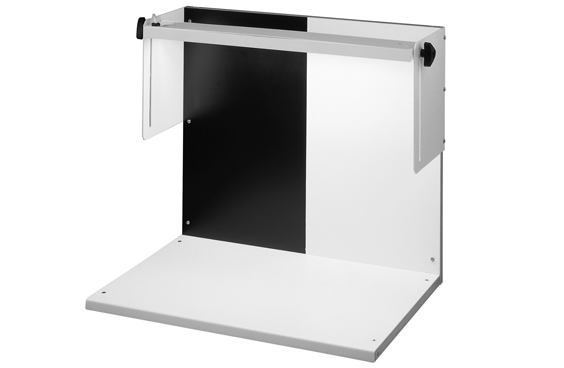Optimizing Automated Visual Inspection For Lyophilized Vials: Best Practices And Strategies

Table of Contents
Selecting the Right Automated Visual Inspection System
Choosing the appropriate automated visual inspection system is the cornerstone of a successful implementation. The right system must accurately detect defects while maintaining high throughput and minimizing false positives.
Understanding Different Inspection Technologies
Several technologies exist for automated visual inspection of lyophilized vials. Each offers unique advantages and disadvantages:
- Machine Vision Systems using Cameras: These systems utilize high-resolution cameras and sophisticated image processing algorithms to identify defects. Pros include high flexibility and relatively low cost. Cons may include sensitivity to lighting variations and potential for slower processing speeds compared to other technologies. Examples include systems from Cognex and Keyence.
- Laser-Based Systems: Laser-based systems offer high precision and speed, particularly effective for detecting subtle defects. Pros include high sensitivity and speed. Cons might include higher initial investment costs and less flexibility in adapting to various vial types. Companies like ISRA VISION offer laser-based solutions.
- Hybrid Systems: Combining multiple technologies (e.g., camera and laser) can leverage the strengths of each, offering a more comprehensive inspection. This approach optimizes detection of various defects and improves overall accuracy.
The choice depends on factors such as required resolution, sensitivity to specific defects (e.g., particulate matter, cracks, delamination), throughput needs, and budget.
Defining Inspection Criteria and Parameters
Establishing clear and comprehensive inspection criteria is crucial. These criteria should cover:
- Particulate Matter: Defining acceptable levels of particulate matter within the vial.
- Cracks and Delamination: Identifying and classifying different types of cracks and delamination in the vial and stopper.
- Fill Level: Ensuring the vial is filled to the correct level.
- Cap Integrity: Checking for proper seal and absence of defects in the cap.
Regulatory compliance, such as FDA guidelines for pharmaceutical manufacturing, plays a significant role in defining acceptable limits and thresholds. These guidelines need to be meticulously followed to ensure the system meets regulatory requirements.
Optimizing the Inspection Process for Lyophilized Vials
Optimizing the inspection process beyond system selection significantly impacts efficiency and accuracy.
Sample Preparation and Handling
Proper sample preparation and handling are critical to prevent damage or contamination before inspection. This includes:
- Careful Vial Handling: Using appropriate robotics and automation to minimize the risk of dropping or damaging vials during handling.
- Controlled Environment: Maintaining a clean and controlled environment to minimize the introduction of particulate matter.
- Efficient Feeding Mechanisms: Employing robotic systems for precise and consistent feeding of vials into the inspection system. This ensures optimal orientation and consistent speed for accurate inspection.
Image Acquisition and Processing
High-quality images are paramount for accurate defect detection. This involves:
- Optimized Lighting: Using appropriate lighting techniques (e.g., coaxial, diffused) to minimize shadows and reflections that can obscure defects.
- Advanced Image Processing: Utilizing sophisticated image processing algorithms for defect detection, classification, and measurement. These algorithms should minimize false positives and false negatives.
- Defect Classification: Training the system to accurately classify different types of defects, allowing for detailed analysis and reporting.
Data Management and Reporting
Efficient data management and reporting are essential for quality control:
- Automated Data Collection: Capturing all inspection data automatically for traceability and analysis.
- Real-time Reporting: Providing immediate feedback on inspection results, facilitating quick identification and resolution of any issues.
- Data Analytics: Utilizing data analysis tools to identify trends, optimize inspection parameters, and improve process efficiency over time. This allows for proactive adjustments and continuous improvement of the inspection process.
Validating and Maintaining the Automated Visual Inspection System
Ensuring the ongoing accuracy and reliability of the system is vital.
Validation Protocols and Procedures
Rigorous validation is essential:
- IQ/OQ/PQ Validation: Performing Installation Qualification (IQ), Operational Qualification (OQ), and Performance Qualification (PQ) to verify system functionality and performance according to regulatory requirements.
- Accuracy Verification: Regularly validating the accuracy of the system through testing with known defective and non-defective samples.
- Compliance Documentation: Maintaining detailed documentation of all validation procedures and results to meet regulatory compliance.
Regular Maintenance and Calibration
Preventive maintenance is crucial for optimal system performance:
- Scheduled Maintenance: Developing a preventative maintenance schedule that includes regular cleaning, inspection, and calibration of the system's components.
- Calibration Procedures: Establishing clear calibration procedures to ensure consistent accuracy and reduce errors.
- System Monitoring: Implementing real-time system monitoring to quickly detect and address potential issues.
Conclusion
Implementing optimized Automated Visual Inspection for Lyophilized Vials offers significant advantages, enhancing efficiency, accuracy, and regulatory compliance within pharmaceutical manufacturing. By carefully selecting the appropriate inspection system, optimizing the inspection process, and ensuring proper validation and maintenance, manufacturers can significantly improve product quality, reduce costs, and meet the ever-increasing demands of the pharmaceutical industry. To explore the benefits and learn more about implementing advanced automated visual inspection solutions for your lyophilized vial processes, contact us today for a consultation. Improve your quality control and regulatory compliance with optimized automated visual inspection solutions!

Featured Posts
-
 Is Mtv Finished The Impact Of The Cbs Vma Simulcast
May 11, 2025
Is Mtv Finished The Impact Of The Cbs Vma Simulcast
May 11, 2025 -
 Payton Pritchards Rise A Deep Dive Into His Sixth Man Of The Year Contention
May 11, 2025
Payton Pritchards Rise A Deep Dive Into His Sixth Man Of The Year Contention
May 11, 2025 -
 Former Bellator Champion Patricio Freire Prepares For Jose Aldo Showdown
May 11, 2025
Former Bellator Champion Patricio Freire Prepares For Jose Aldo Showdown
May 11, 2025 -
 Analysis Trumps Push For Faster Nuclear Power Plant Builds
May 11, 2025
Analysis Trumps Push For Faster Nuclear Power Plant Builds
May 11, 2025 -
 The Netflix Film That Brought Adam Sandler And His Wife Together
May 11, 2025
The Netflix Film That Brought Adam Sandler And His Wife Together
May 11, 2025
